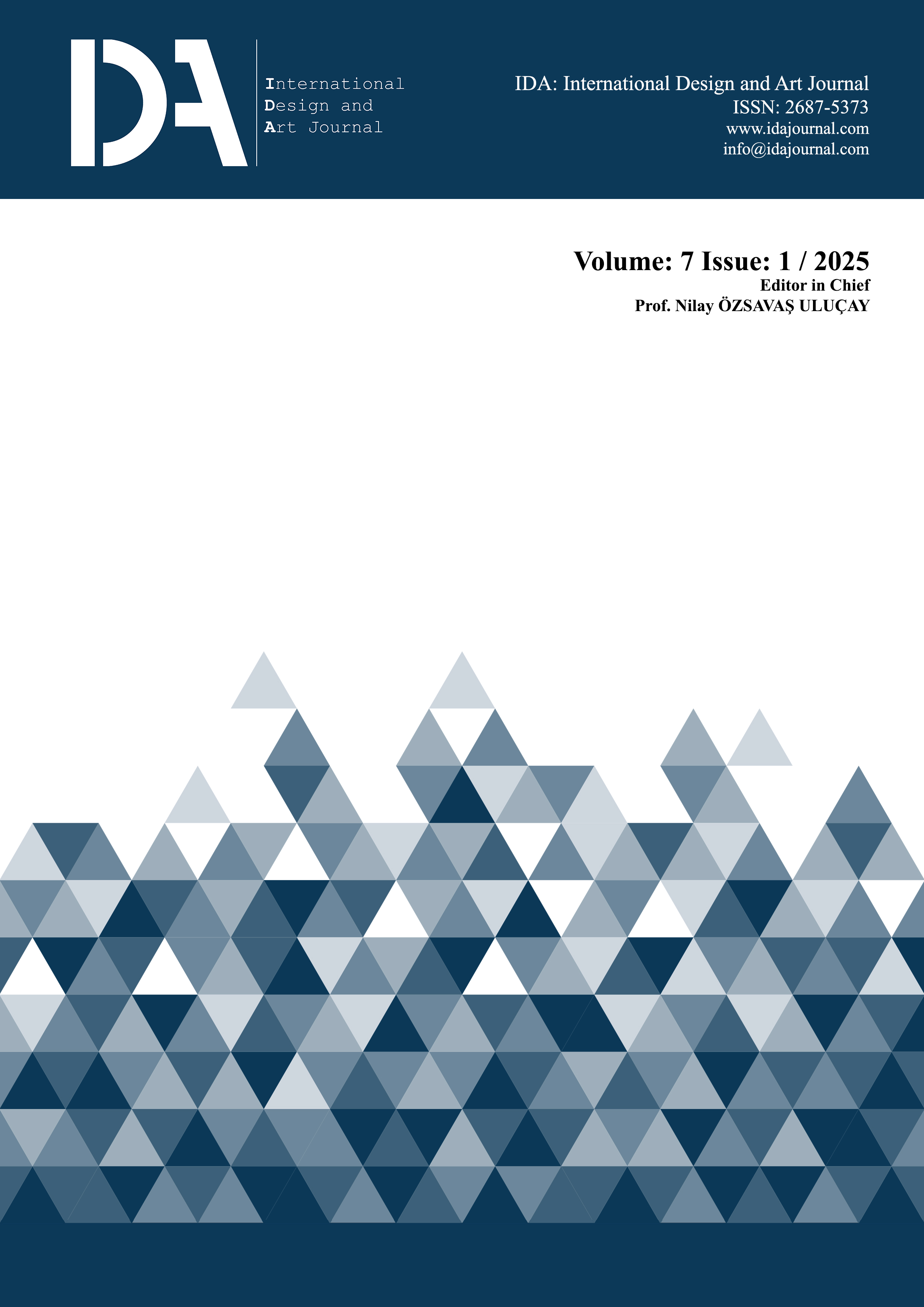20. yüzyıl teknolojik ütopyalarının günümüze yansıması: Kapsül oteller
Anahtar Kelimeler:
Kapsül otel- Mikro konut- Teknolojik ütopya- Metabolizm hareketi- ArchigramÖzet
Artan nüfus, yükselen arsa fiyatları ve zorlaşan ekonomik koşullar gibi birçok neden otel tasarımlarında değişikliğe yol açmıştır. Çözüm olarak dar alanda planlanmış, uygun fiyatlı, havaalanı veya tren istasyonlarına yakın kapsül otel konsepti ortaya çıkmıştır. Tasarımında 20. yüzyıl teknolojik ütopyalarından esinlenilen ve ilk olarak 1970’lerde Japonya’da ortaya çıkan kapsül oteller, 21. yüzyılda birçok ülkede yaygınlaşmaya başlamıştır. Bu çalışmanın amacı farklı ülkelerdeki kapsül otellerin ortak ve farklı özelliklerinin tespit edilmesidir. Bu kapsamda Nine Hours Kapsül Otel (Osaka), KINN Kapsül Otel (Singapur) ve Kapsül Otel-Sidney (Sidney) olmak üzere üç kapsül otel örneği seçilmiştir. Çalışmada kavramsal inceleme ve durum çalışması yöntemini içeren karma bir nitel araştırma yöntemi kullanılmış, benzeşik (homojen) durum örneklemesi tekniğiyle seçilen otel örnekleri analiz edilmiştir. Ekonomik ama son derece kısıtlı imkânlara sahip olan kapsül otellerin tasarımında kapsüllerin boyutu ülkeden ülkeye farklılık göstermektedir. Aynı zamanda kapsüllerde kullanılan renkler, formlar, malzemeler ve donatı çeşitliliği de kapsül otelleri birbirinden ayıran özelliklerdendir. Çalışmada elde edilen bulgulara göre otellerin konumu, renk ve malzeme tercihleri ve donatıları farklılık gösterse de kapsüllerin boyutlarının, yerleşimlerinin ve kapsüllere giriş yönlerinin literatürde tanımlanan kapsül otel kavramından uzaklaşmadığı tespit edilmiştir.
Referanslar
Altun, D. (2022). Kısa dönem konaklama üniteleri: Uyku kabinlerinin kullanıcı ile olan ilişkisi [Yüksek Lisans Tezi, Başkent Üniversitesi]. YÖK Ulusal Tez Merkezi.
Arslan, M. E. (2006). 20. yüzyıl teknolojik ütopyalarının, hareketlilik, esneklik/uyabilirlik ve teknoloji kavramları bağlamında çağdaş konut tasarımına etkisi [Yüksek Lisans Tezi, İstanbul Teknik Üniversitesi]. YÖK Ulusal Tez Merkezi.
Bagio, A. C. & Budidharmanto, L. P. (2023). Guest pro-environmental behavior towards the implementation of energy efficiency through smart key technology in capsule hotel. Indonesian Journal of Social and Environmental Issues, 4(2), 184-191. https://doi.org/10.47540/ijsei.v4i2.1009
Barışık, G. O. & Özen, E. S. (2020). Dar mekanlarda esnek ve fonksiyonel mutfak tasarımları. Sanat ve Tasarım Dergisi, (26), 537-561.
Baydaroğlu, M. (2022). Tracing traditional elements of Japanese architecture through contemporary micro houses in Japan [Yüksek Lisans Tezi, Yeditepe Üniversitesi]. YÖK Ulusal Tez Merkezi
Belentepe, A. & Kariptaş, F. S. (2019). Mikro konutların iç mekân tasarımının incelenmesi. Haliç Üniversitesi Fen Bilimleri Dergisi, 2(2), 179-195. https://doi.org/10.46373/hafebid.603795
Bilquish, I. & Susanto, D. (2018, Ağustos 12-14). Reveal the type of micro-units as a living place in Jakarta apartments. 2nd International Conference on Smart Grid and Smart Cities (ICSGSC 2018) İçinde (ss. 10-15), Kuala Lumpur, Malaysia. IEEE. https://doi.org/10.1109/ICSGSC.2018.8541299
Boonbanjerdsri, K. (2012). Capsule homes: Creating space within space [Doktora Tezi, Massachusetts Institute of Technology]. MIT Libraries.
Chen, H. J., Wong, S. W., Bilgihan, A., & Okumus, F. (2020). Capsule hotels: Offering experiential value or perceived as risky by tourists? An optimum stimulation level model. International Journal of Hospitality Management, 86(102434), 1-10. https://doi.org/10.1016/j.ijhm.2019.102434
Cook, P. (Ed.). (1999). Archigram. Princeton Architectural Press.
Çalhan, H. (2023). Turizmde inovatif bir ürün olarak kapsül otellerin incelenmesi. Journal of Gastronomy, Hospitality and Travel, 6(1), 112-130. https://doi.org/10.33083/joghat.2023.252
Davey, L. (1991). The application of case study evaluations. Practical Assessment, Research & Evaluation, 2(9), 1-2. https://doi.org/10.7275/02g8-bb93
Dornob. (2022, 23 Haziran). Minimalist 9 Hours Capsule Hotel. Dornob. https://dornob.com/9-hours-small-boutique-pod-hotel-features-minimalist-luxury/ (19.11.2024).
Duran, Ö. (2011). Mimarlık ve bilim kurgu edebiyatı bağlamında Archigram’dan ve Reeve’den öğrendiklerimiz [Yüksek Lisans Tezi, Gazi Üniversitesi]. YÖK Ulusal Tez Merkezi.
Fragkou, D. & Stevenson, E. V. (2012). Study of beehive and its potential “biomimicry” application on capsule hotels in Tokyo, Japan. Proceedings of the 2nd Conference of People and Buildings, London Metropolitan University.
Globalization & World Cities. (2025). The world according to GaWC. https://gawc.lboro.ac.uk/gawc-worlds/the-world-according-to-gawc/ (12.03.2025).
Gunawan, Y., Gaol, F. L., & Matsuo, T. (2024). Unveiling risks through machine learning: analyzing Indonesian user feedback dataset of capsule hotel experiences. Kesatria: Jurnal Penerapan Sistem Informasi (Komputer dan Manajemen), 5(2), 395-404.
Haack, L. & Höpfner, J. (2010). Microarchitecture-experiments in space optimisation. C. Schittich (Ed.), Detail small structures: compact dwelling, temporary structures, room modules İçinde (s. 11-23). Birkhauser.
Hjgher Studio. (2024). KINN Hotel. Hjgher Studio. https://hjgher.com/projects/kinn/ (19.11.2024).
Hunn, P. (2017, 9 Haziran). 2001: A Space Odyssey meets The Great Gatsby: Australia’s first capsule hotel opens in Sydney. Architecture, Au. https://architectureau.com/articles/2001-a-space-odyssey-meets-the-great-gatsby-australias-first-capsule-hotel-opens-in-sydney/ (19.11.2024).
Iglesias, T. (2014). The promises and pitfalls of micro‐housing. Zoning and Planning Law Report, 37(10), 1-12.
İslamoğlu, H. & Alnıaçık, Ü. (2019). Sosyal bilimlerde araştırma yöntemleri. Beta Yayınevi.
Jablonska, J., Tarczewski, R., & Trocka-Leszczynska, E. (2018). Ergonomic solutions in capsule hotels? J. Charytonowicz, C. Falcão (Ed.), Advances in human factors, sustainable urban planning and infrastructure İçinde (ss. 239-248). Springer International Publishing. https://doi.org/10.1007/978-3-319-60450-3_23
Kurnalı, M. (2022). Mikro mekanlarda iç mekan ergonomisi. International Journal of Engineering Research and Development, 14(3), 20-31. https://doi.org/10.29137/umagd.1197616
Kurokawa, K. (1977). Metabolism in architecture. Studio Vista.
Lee, T. Y. (2013). Top 10 trends of the next generation of travel: The millennials. HVS Global Hospitality Services.
Lee, W. S., Lee, J. K., & Moon, J. (2018). Study on the preference for capsule hotel attributes using a choice experiment. Tourism Economics, 24(4), 492-499. https://doi.org/10.1177/1354816618765345
Lemy, D. M. & Heidi, E. (2019). The potential of capsule hotel service in Semarang. E-Journal of Tourism, 6, 196-209. https://doi.org/10.24922/eot.v6i2.49944
Lin, Z. (2011). Nakagin Capsule Tower and the Metabolist Movement revisited. Journal of Architectural Education, 65, 13-32. https://doi.org/10.1111/j.1531-314X.2011.01158.x
Mallgrave, H. F. (2005). Modern architectural theory: A historical survey, 1673-1968. Cambridge University Press. https://doi.org/10.1017/CBO9780511497728
Michael, G., Yaacob, N. M., & Ali, Z. M. (2018). The capsule living unit reconsidered a utopia transformed reality. Pertanika Journal of Social Sciences & Humanities, 26(3), 1405-1417.
Nine Hours. (t.y.a). 9h nine hours Namba Station. Nine Hours. https://ninehours.co.jp/en/namba-station (19.11.2024).
Nine Hours. (t.y.b). Our features. Nine Hours. https://ninehours.co.jp/en/stay-services (19.11.2024).
Olorunsola, V. O., Saydam, M. B., Lasisi, T. T., & Eluwole, K. K. (2023). Customer experience management in capsule hotels: A content analysis of guest online review. Journal of Hospitality and Tourism Insights, 6(5), 2462-2483. https://doi.org/10.1108/JHTI-03-2022-0113
Özturan, Ö. (2015). Teknolojik gelişmelerin iç mekân biçimlenişine etkisi. İç Mimarlık Dergisi, (5), 125-135.
Richmond, S. (2012). Micro-living: Learning to live large in small spaces [Yayımlanmamış Yüksek Lisans Tezi]. Victoria University of Wellington https://doi.org/10.26686/wgtn.17011805.v1
Rutes, W. A., Penner, R. H., & Adams, L. (2001). Hotel design, planning and development. Norton & Company.
Sekman, A. (2017). Kentsel formların ütopya ve distopya kavramları bağlamında irdelenmesi. Toplum ve Demokrasi Dergisi, 11(23), 103-120.
Šenk, P. (2013). The concept of capsule architecture as experiment; origins and manifestations with selected examples from Slovenia and Croatia. Prostor: znanstveni časopis za arhitekturu i urbanizam, 21(2), 351-361.
Šenk, P. (2018). Capsules: Typology of other architecture. Routledge. https://doi.org/10.4324/9781315272177
Soub, N. M. H. & Memikoğlu, İ. (2020). Exploring the preferences for micro-apartments. Online Journal of Art & Design, 8(2), 88-99.
Şekerci, C. & Taştan, Z. (2024). Mikro mekân kavramının örnekler üzerinden incelenmesi. E. Selçuk (Ed.), Mimarlık, planlama ve tasarım alanında uluslararası araştırmalar V İçinde (ss. 97-117). Eğitim Yayınevi.
Şensoy, G. (2016). Mimarlıkta eleştiri bağlamında ütopya önermeleri [Yüksek Lisans Tezi, Eskişehir Anadolu Üniversitesi]. YÖK Ulusal Tez Merkezi.
Tamari, T. (2014). Metabolism: Utopian urbanism and the Japanese modern architecture movement. Theory, Culture & Society, 31(7-8), 201-225. https://doi.org/10.1177/0263276414547777
The Capsule Hotel. (2017). Capsule. The Capsule Hotel. https://www.thecapsulehotel.com.au/rooms (19.11.2024).
Tüzünkan, D. (2017). The relationship between innovation and tourism: The case of smart tourism. International Journal of Applied Engineering Research, 12(23), 14861-14867.
Urban Land Institute. (2014). The macro view on micro units. Urban Land Institute.
Yu, H. & Akita, T. (2019). The effect of illuminance and correlated colour temperature on perceived comfort according to reading behaviour in a capsule hotel. Building and Environment, 148, 384-393. https://doi.org/10.1016/j.buildenv.2018.11.027
World Architecture. (2019, 18 Aralık). Naruse Inokuma Architects reinvents capsule hotel experience with more functionality in this hotel. World Architecture. https://worldarchitecture.org/article-links/eeenf/naruse-inokuma-architects-reinvents-capsule-hotel-experience-with-more-functionality-in-this-hotel.html (19.11.2024).
Yücel, S. & Seçer, F. K. (2019). Mikro hacimlerde mobilya sistemleri. Haliç Üniversitesi Fen Bilimleri Dergisi, 2(1), 103-112.
İndir
Yayınlanmış
Sayı
Bölüm
Lisans
Telif Hakkı (c) 2025 IDA: International Design and Art Journal

Bu çalışma Creative Commons Attribution-NonCommercial-ShareAlike 4.0 International License ile lisanslanmıtır.
IDA: International Design and Art Journal açık erişimli akademik bir dergidir. Kabul edilen makalelerin tüm yayın hakları IDA: International Design and Art Journal'a devredilmiş sayılır. Makaleler başka bir yerde yayınlanamaz, kopyalanamaz ve referans göstermeden kullanılamaz.

IDA: International Design and Art Journal Creative Commons Atıf-GayriTicari-AynıLisanslaPaylaş 4.0 Uluslararası Lisansı ile lisanslanmıştır.


